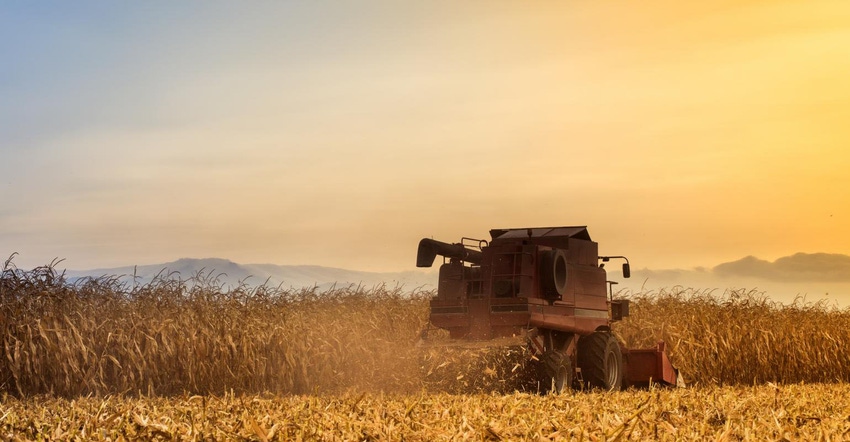
Uncertainty is high regarding possible changes to U.S. corn and soybean production in the upcoming Oct. 12 USDA update.
The USDA shocked the market last week with surprisingly bearish estimates of U.S. corn and soybean ending stocks in the Grain Stocks report. Plus, variable yields are leading to quite a bit of uncertainty surrounding this year’s crops. Some contend U.S. crop size will increase further in the next USDA Crop Production report on Oct. 12, but others believe production will decrease.
Trends in harvested acreage
USDA will also update estimates of harvested acreage for 2021. Today we take a closer look at recent trends in harvested acreage in the October report.
There is precedent for significant changes to corn and soybean harvested acreage estimates in the October report compared to September. Over the past 17 years, harvested acreage of corn in October has declined 12 times, ranging from a high of 1.9 million acres to a low of 100,000 acres. Acreage has been higher 4 times (range of 286,000 to 700,000) and been unchanged once.
Over the same period, harvested acreage of soybeans has also declined 12 times (range of 10,000 to 1.2 million) and been higher 5 times (range of 300,000 to 2.2 million).
If 2021 corn acreage were to decline by 1.0 million acres, the national average yield would have to increase by 2.0 bushels per acre for total corn production to top that reported in September. Alternatively, if 2021 harvested corn acreage were to increase by 1 million acres in the October report, the national average yield would have to decrease by 2.1 bushels per acre for production to fall short of the September forecast.
While a case could be made for an increase in acreage for both crops from current USDA projections for 2021, there is also the possibility that an increase in acreage could be offset by a lower yield, resulting in a smaller crop(s).
Uncertainty means opportunity
If last week’s bearish USDA Grain Stocks report taught us anything, it is that surprises—bullish or bearish—can occur at any time. Most importantly, as a student of the market you understand that it is this type of uncertainty that often leads to increased market volatility—and potential opportunity—for your operation.
Having downside protection in place while maintaining flexibility to participate in rallies is key to effective risk management. Effective marketing by definition requires having control of a position at all times. During times of uncertainty (acreage and yields), one of the benefits of this approach is the peace of mind obtained by having downside protection in place in the event of lower prices, while at the same time maintaining flexibility to participate if the market rallies.
Marketing next year’s crop
As we have said in the past, a good marketing plan looks at more than one year at a time. Don’t let harvest concerns keep you from taking advantage of market opportunities in the 2022 crop. December 2022 corn futures have been on a tear lately reaching the highest levels since contract highs were attained on May 7, 2021 (CBOT prices). Dec22 futures are currently 35% higher than Dec21 futures were one year ago.
Yes, input costs are also sharply higher. However, corn prices are far from being guaranteed that they’ll stay up at these levels just because inputs are at very expensive levels. The world WILL respond to these higher corn prices. It’s best to defend against crashing prices and yet still keep the door open in case sharply higher prices are in store, while having a consistent, disciplined, and non-emotional plan for managing higher and/or lower prices. Your Advance Trading advisor is well prepared to assist in developing and executing risk management strategies during this busy time of year.
Contact Advance Trading at (800) 664-2321 or go to www.advance-trading.com.
Information provided may include opinions of the author and is subject to the following disclosures:
The risk of trading futures and options can be substantial. All information, publications, and material used and distributed by Advance Trading Inc. shall be construed as a solicitation. ATI does not maintain an independent research department as defined in CFTC Regulation 1.71. Information obtained from third-party sources is believed to be reliable, but its accuracy is not guaranteed by Advance Trading Inc. Past performance is not necessarily indicative of future results.
The opinions of the author are not necessarily those of Farm Futures or Farm Progress.
About the Author(s)
You May Also Like








